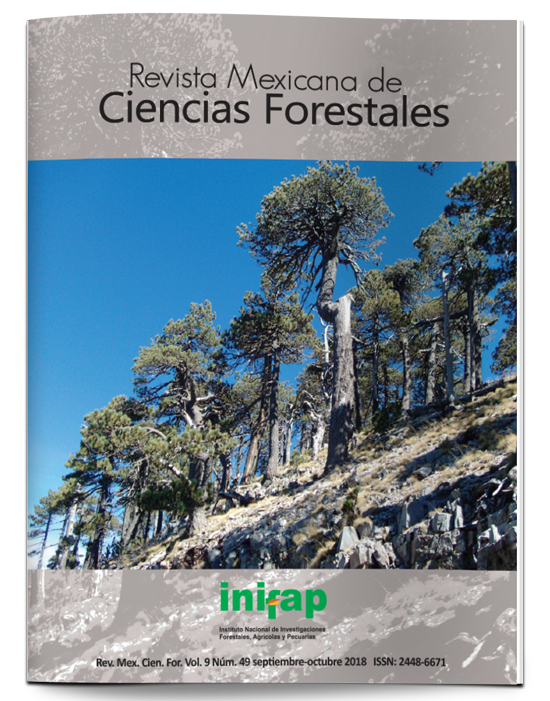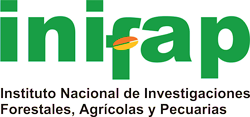Growth of Pinus greggii Engelm. under different routines of fertilization at the nursery
DOI:
https://doi.org/10.29298/rmcf.v9i49.171Keywords:
Plant quality, costs, soluble fertilizers, nutrition, Pinus greggii Engelm., physiological variables, morphological variablesAbstract
Fertilizing the plant at the nursery favors its physiological and morphological condition, which contributes to improve its quality, a basic aspect to favor the survival and initial growth after planting. This research evaluated the effect of a controlled delivery fertilizer (Osmocote®), combined with three soluble fertilizers (Triple 19, Poly-feed® and Peters professional®) in fixed dose (200 ppm) and exponential (100, 200 y 300 ppm) in the growth and production costs of Pinus greggii at the nursery. Seven treatments were applied under an experimental randomized block design. At 134 days (4.5 months) of the fertilization trial started, the plant was 7.5 months old; at that time the height, diameter, biomass production of the root, aerial and total part, the Dickson quality index, the nutritional status and assimilation of N-P-K in the foliage of the plants and the costs of fertilization by treatment. Results indicate that treatments 1, 3 and 7 reacted better to the application of fertilizers in the assessed morphological variables; however, only treatments 3 and 7 had a better response to physiological variables, and of these, number 3 had the lowest cost due to the applied fertilization.
Downloads
Published
How to Cite
Issue
Section
License
The authors who publish in Revista Mexicana de Ciencias Forestales accept the following conditions:
In accordance with copyright laws, Revista Mexicana de Ciencias Forestales recognizes and respects the authors’ moral right and ownership of property rights which will be transferred to the journal for dissemination in open access.
All the texts published by Revista Mexicana de Ciencias Forestales –with no exception– are distributed under a Creative Commons License Attribution-NonCommercial 4.0 International (CC BY-NC 4.0), which allows third parties to use the publication as long as the work’s authorship and its first publication in this journal are mentioned
The author(s) can enter into independent and additional contractual agreements for the nonexclusive distribution of the version of the article published in Revista Mexicana de Ciencias Forestales (for example, include it into an institutional repository or publish it in a book) as long as it is clearly and explicitly indicated that the work was published for the first time in Revista Mexicana de Ciencias Forestales.
For all the above, the authors shall send the form of Letter-transfer of Property Rights for the first publication duly filled in and signed by the author(s). This form must be sent as a PDF file to: ciencia.forestal2@inifap.gob.mx
This work is licensed under a Creative Commons Attribution-Noncommercial 4.0 International license.






